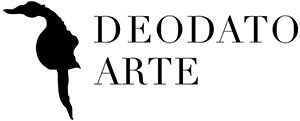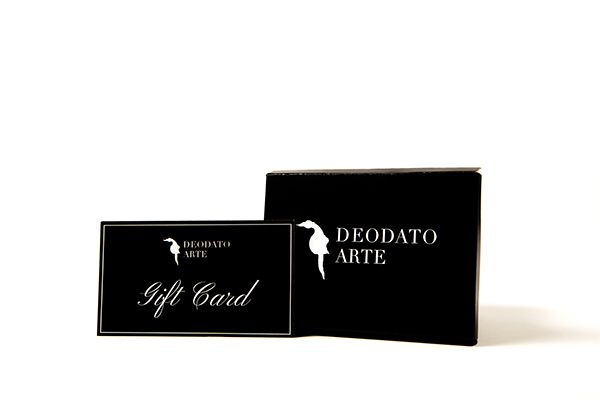- Home
- Artists
- Alex Katz
- Andy Warhol
- Angelo Accardi
- Arman
- Arnaud Nazare-Aga
- Banksy
- Bearbrick
- Bernard Aubertin
- Christo
- Damien Hirst
- Daniele Fortuna
- David Kracov
- David LaChapelle
- Dorit Levinstein
- Felipe Cardena
- Georges Braque
- Giosetta Fioroni
- Helmut Newton
- Henri Matisse
- iClim
- Invader
- James Rosenquist
- Jean-Michel Basquiat
- Jeff Koons
- Joan Miró
- José Molina
- Kaws
- Keith Haring
- Kenny Scharf
- Liu Bolin
- Lucio Fontana
- Marc Chagall
- Marco Glaviano
- Marco Lodola
- Mark Kostabi
- Maxime Siau
- Miaz Brothers
- Mimmo Rotella
- Mr. Brainwash
- Mr. Savethewall
- Obey
- Orticanoodles
- Pablo Picasso
- Richard Orlinski
- Robert Indiana
- Roy Lichtenstein
- Romero Britto
- Salvador Dalì
- Stik
- Takashi Murakami
- Tomoko Nagao
- Tvboy
- Yayoi Kusama
- ...other artists
- Athos Faccincani
- Carlo Massimo Franchi
- Davide Nido
- Franco Costalonga
- Francesco Musante
- Giampaolo Talani
- Giovanna Fra
- Giuliano Grittini
- Giuseppe Chiari
- Hiroyuki Takahashi
- Hitomi Maehashi
- Lido Bettarini
- Manolo Valdés
- Manuela Manes
- Matteo Guarnaccia
- Maurizio Galimberti
- Mimmo Paladino
- Salvatore Emblema
- Sam Francis
- Ugo Nespolo
- Xiaogang Zhang
- Gift Shop
- META VR
- BLOG
- ABOUT
- BUSINESS B2B
- Artists
- Alex Katz
- Andy Warhol
- Angelo Accardi
- Arman
- Arnaud Nazare-Aga
- Banksy
- Bearbrick
- Bernard Aubertin
- Christo
- Damien Hirst
- Daniele Fortuna
- David Kracov
- David LaChapelle
- Dorit Levinstein
- Felipe Cardena
- Georges Braque
- Giosetta Fioroni
- Helmut Newton
- Henri Matisse
- iClim
- Invader
- James Rosenquist
- Jean-Michel Basquiat
- Jeff Koons
- Joan Miró
- José Molina
- Kaws
- Keith Haring
- Kenny Scharf
- Liu Bolin
- Lucio Fontana
- Marc Chagall
- Marco Glaviano
- Marco Lodola
- Mark Kostabi
- Maxime Siau
- Miaz Brothers
- Mimmo Rotella
- Mr. Brainwash
- Mr. Savethewall
- Obey
- Orticanoodles
- Pablo Picasso
- Richard Orlinski
- Robert Indiana
- Roy Lichtenstein
- Romero Britto
- Salvador Dalì
- Stik
- Takashi Murakami
- Tomoko Nagao
- Tvboy
- Yayoi Kusama
- ...other artists
- Athos Faccincani
- Carlo Massimo Franchi
- Davide Nido
- Franco Costalonga
- Francesco Musante
- Giampaolo Talani
- Giovanna Fra
- Giuliano Grittini
- Giuseppe Chiari
- Hiroyuki Takahashi
- Hitomi Maehashi
- Lido Bettarini
- Manolo Valdés
- Manuela Manes
- Matteo Guarnaccia
- Maurizio Galimberti
- Mimmo Paladino
- Salvatore Emblema
- Sam Francis
- Ugo Nespolo
- Xiaogang Zhang
- Gift Shop
Register
Wishlist
Contact Us
- META VR
- BLOG
- ABOUT
- BUSINESS B2B


Thank you!

ORARI DI APERTURA
|MAPPA
- Home
- Artists
- Henri Matisse
- Hand-signed works
- Danseuse reflétée dans la glace

Danseuse reflétée dans la glace
| Artist: Henri Matisse | Width: 36,5 cm |
| Support: Paper | Height: 52,5 cm |
VAT included
Products with VAT included show a price calculated with VAT tax, so the additional tax of 22% is already added to the price of these products.
VAT Margin
The products with VAT Margin apply the additional tax of 22% only on the margin, the difference between the price at which the product is purchased and the price at which the same product is resold.
THE ARTWORK
Henri Matisse - Danseuse reflétée dans la glace
The work by Henri Matisse Danseuse reflétée dans la glace is an original color lithograph made in 1927 in limited edition of 50 pieces hand-signed by the artist. It measures 52,5x36,5 cm.
Among the leading members of Fauvism, Henri Matisse combines primary colors in a deep research on color and the emotions it can transmit. With works such as Harmony in red or Music, the artist expresses nostalgic and evocative feelings. By simplifying the shapes Matisse makes color the true protagonist of his art.
Catalogue reference: D490.
Henri Matisse, Danseuse reflétée dans la glace: prices and value
If you are interested in the work by Henri Matisse Danseuse reflétée dans la glace and you wish to know the price click on "SHOW PRICE" to shortly receive it by email.
Do not hesitate to contact us for more information about the artist and his works for sale.
Join the wonders of art thanks to the wide selection of works available on our website.
ADDITIONAL INFORMATION
Henri Matisse - Danseuse reflétée dans la glace - Hand-signed lithograph in limited edition of 50 - D490 - Frame with museum glass included
| SKU | MATH-280621-11 |
| Technique | Lithograph |
| Edition | Limited edition of 50 pieces |
| Support | Paper |
| Width | 36,5 cm |
| Height | 52,5 cm |
| Year | 1927 |
| Frame | Included |
| Notes | Catalogue reference: D490 |
ARTIST: HENRI MATISSE
Henri Matisse: biography
Henri Matisse (31 December 1869 - 3 November 1954) was a very influential painter of the 20th century. He is considered to be the leading exponent of the Fauvism artistic movement.
The early years of Henri Matisse: life of a young talent
Henri-Émile-Benoît Matisse was born on 31 December 1869 in Le Cateau-Cambrésis in France. Being the eldest son of two seed merchants, he grew up in Bohain-en-Vermandois, in the north-eastern region of the country.
After having begun attending law school, the young Matisse discovered art while recovering from an attack of appendicitis. "Holding the brush for the first time" was for him "like entering a kind of paradise" (Matisse, “Notes d'un peintre”).
Different periods intertwine in Matisse’s artistic career, fuelled by sometimes opposing styles and currents. Initially, the artist painted still lifes and landscapes in the Flemish tradition. After approaching Impressionism and the works of Van Gogh, Matisse innovated his style, which was later also influenced by Post-Impressionism, Japanese painting and the Pointillisme technique.
Henri Matisse style evolution: Fauvism
Matisse Fauve season begins with his move to Paris. André Derain, Henri Matisse’s collaborator during the early 1900s, had great influence on the young painter's tendency to emphasise colour.
We can trace back to this period the tendency to emphasise expression over detail in the works of Henri Matisse. “Fauvism” (from Fauves - beasts, wild beasts) was the name used to describe the violent and often dissonant paintings presented at the 1905 Salon d'Automne by Matisse and Derain, together with Georges Braque, Raoul Dufy and Maurice de Vlaminck.
The unstoppable rise of Henri Matisse: La dance and Gertrude Stein
Although 1906 marked a period of decline for the Fauves, Matisse painted his most famous works during these years. Painted for the Russian art collector Sergei Ščukin by Henri Matisse, La Dance is often mentioned among his greatest masterpieces.
The artist's first meeting with Picasso took place in 1904 in the salon of Gertrude Stein. Matisse became his great friend and rival. The works of the two masters began to sparkle the interest of the Stein family, who collected hundreds of their paintings.
The Côte d’Azur and its impact on Matisse: collage and odalisques
In the twilight of the First World War, Matisse moved to Cimiez (Nice), a suburb of Nice on the French Riviera. A “back to order” period began in Cimiez, reflected in paintings with a softer, more relaxed approach. Among the distinctive works of this phase, Matisse's odalisques display an oriental style.
From 1930 onwards, a new vigour seemed to influence the art of Matisse: Dance II, now in the collection of the Hermitage Museum in St. Petersburg, represents an emblematic example. The artist had to face difficult times: after splitting up with his wife, Matisse was diagnosed with intestinal cancer, which forced him to undergo a delicate surgery.
Made with the help of assistants, belong to these years the gouaches découpés. Henri Matisse created them as large collages of gouache-painted paper, cut out with scissors and assembled into marvellous compositions.
The last years of Henri Matisse
In his 1947 limited edition book Jazz, Matisse included colour prints of collages framed by his thoughts.
Compelled by his increasingly precarious health, in the last years of his life the artist was often a guest of the Dominican nuns of the monastery of Vence, whom he decided to pay homage to by creating the Vence Chapel. Matisse, seduced by the evocative landscapes of the Côte d'Azur, recounted his relationship with the uncontaminated power of nature by decorating the Chappelle du Saint-Marie du Rosaire.
In 1954, Matisse died of a heart attack. The artist is buried in the cemetery of the Monastery of Cimiez.
Henri Matisse: painting style and technique
Henri Matisse paintings are works of art in which reality is transformed, simplified and flattened. Through the measured juxtaposition of primary and secondary colours, the artist creates his own ecosystem, which gradually moves away from natural description.
Matisse painting style has been progressively refined over the years. The nearly-abstract technique of collage on paper is embodied in simple, homogeneous figures that contrast vividly with the background. The main example of Matisse “painting with scissors” technique is his Blue Nudes series. The coloured figures were glued together following the outline previously drawn in pencil.
When the lights of the south inspired Matisse, art and thought of the artist turned to colour. During the years in Cimiez (Nice), his research focused on the relationship between colours, on the contrast and harmony between vibrant combinations of yellows and violets, reds and greens, blues and oranges, for a lively result with a strong decorative attitude.
Written by Henri Matisse, Notes d'un peintre is full of precious thoughts on his painting. The artist's poetic words represent a key to the understanding of his art: "What I pursue above all else is expression.... Expression for me [...] is the whole arrangement of my painting: the place that the bodies occupy, the voids around them, the proportions, everything has its importance. Composition is the art of decoratively arranging the different elements that painting has at its disposal to express its feelings... A work of art involves an overall harmony [...]".
Matisse paintings: the artist’s revolution of color theory
Although the Henri Matisse - Fauvism association is universally recognized, the uniqueness of his works does not allow them to be pigeonholed into preconceived categories.
A revolution in colour takes place in the products of the artistic research of Matisse: works produced with bold colour choices, in which aesthetic precision is overcome by an indomitable energy that can only be compared to the proto-Impressionist paintings of Van Gogh and Gauguin, of great inspiration for Matisse.
Henri Matisse: Dance
Often described as Henri Matisse most famous work, La Dance is the name of two compositions. The best known dates back to 1910 and it is an oil on canvas measuring 260x391 cm.
In La Dance, Matisse paints five individuals dancing in a circle, hand in hand. The figures are filled with vivid tones of red, accentuating the contrast with the green and blue background - symbolizing Earth and sky.
Although it was called a “demonic cacophony” by the critics of the 1910 Salon d'Automne, the artwork by Matisse Dance is an rhythmic symphony that engages the eye in a play of vibrant sensations. Matisse invites us to enter his roundabout, in a constant tension between the joy and harmony of equilibrium and the fear of its imminent rupture.
Henri Matisse: Music
An oil painting on canvas by Henri Matisse, Music dates from 1910 and measures 260x389 cm. The work is part of the collection of the Hermitage Museum in St. Petersburg.
The artwork by Henri Matisse Music was commissioned by Sergei Ščukin. It depicts five characters. Two of them are playing music, and the remaining three seem to be singing in chorus. The consonance with the tones of the previously described masterpiece by Matisse Dance is clearly visible: red for the bodies, blue for the sky and green for the earth.
Henri Matisse: Goldfish
An oil on canvas measuring 146x97 cm and realized by Henri Matisse, Goldfish displays four goldfish swimming in a vial, looking at the viewer.
In Goldfish, Matisse depicts in Fauve tones a desire to return to naturalism. The real protagonist of the work is undoubtedly colour. It dominates every detail of the composition, from the vegetation surrounding the fishes to the table under the ampoule.
The work by Henri Matisse Goldfish is currently housed in Pushkin State Museum of Fine Arts in Moscow.
Henri Matisse: Joy of Life
Probably the most ambitious painting of the Fauve period of Henri Matisse, Joy of Life is an oil on canvas measuring 176.5x240.7 cm.
Influenced by Gauguin and Oriental art, the work by Matisse Joy of Life depicts female nudes rendered in patches, in a fusion of man and nature for an ode to primitiveness. The chromatic exaltation of the composition, together with an attempt to distort the human figures, responds to his intention to "look at all life through the eyes of a child".
Henri Matisse paintings: for sale with prices and values on Deodato Arte
If you are interested in the artist, you can find Matisse paintings for sale online on Deodato Arte website.
Do you want to know more about Henri Matisse paintings? Values and prices are available on our website. Matisse paintings proposed by Contemporary Art Gallery Deodato Arte are carefully selected and provided with authentication certificate.
For any information about Matisse paintings, please do not hesitate to contact us at [email protected].
SHIPMENT DETAILS
The artwork is delicate and requires a custom-made wooden box to protect it during transportation. Delivery to EU countries takes 5-15 business days.
For deliveries outside the EU there may be a clearance delay at customs. Contact [email protected] to receive an estimate of possible customs delays.
The shipping cost is calculated before payment. The cost of the box and packaging is included in the shipping cost.
For more information, please visit our Shipping Methods, Returns and Refunds.
HD IMAGE
By registering you can download a template of the certificate of authenticity and/or HD image. Register and make the page reload.
REGISTER OR LOGINHOW TO BUY
We are happy that you decided to buy an artwork. We'll explain how to do it, but always remember that you can also buy via email ([email protected]), by phone (+39 02.80886294) or by physically coming to one of our galleries.
PRICE
If the price is visible in the product fiche you can click "ADD TO CART" and proceed autonomously choosing later how to pay and how you like shipping (or pick-up it in one of our store).
If the price is not visible, you must press the "SHOW PRICE" button, so you will receive an email with the price and a button, "DON'T LOOSE IT, BUY NOW": if the price is right for you click on this button and you will be sent back to the site to complete the purchase.
TAX
if you LIVE IN EU
If you live in Europe (CEE) the price we show you already includes taxes. The works are taxed either with VAT exposed (22%) or VAT with the margin, if you are a private person you do not change anything, if you are a company: in In the first case, you will recover the VAT, in the second, no. When you put the works in the cart you will be separated from the vat exposed.
If you DON'T LIVE IN EU and you want an EXTRA EU shipping
Many works (not all) have an exposed VAT of 22% included in the price, this vat will be spun off! Obviously you will pay the VAT to your destination country, if due. For example if you live in Switzerland you save 22% but you will have to pay 8.1% to your customs, if you live in Hong Kong you will save 22% and you will not have to pay anything to your customs (lucky you).
SHIPPING
Shipments are insured, check the product fiche for more information, or write to [email protected]. For works in stock the delivery time for Italy is three working days, before placing your order please contact us via email ([email protected]) or by phone (+39 02.80886294) to check availability.
PAYMENT
If you complete the purchase on the site you can use a credit card, or you can make a bank transfer. Payment in cash is accepted up to 5,000 euros physically in one of our stores. Payments in BitCoin or cryptocurrencies are NOT accepted.
- Mr. Savethewall My heart - Poster£12.79 VAT included
VAT included
Products with VAT included show a price calculated with VAT tax, so the additional tax of 22% is already added to the price of these products.
VAT Margin
The products with VAT Margin apply the additional tax of 22% only on the margin, the difference between the price at which the product is purchased and the price at which the same product is resold.










 Register
Register Wishlist
Wishlist Contact Us
Contact Us










